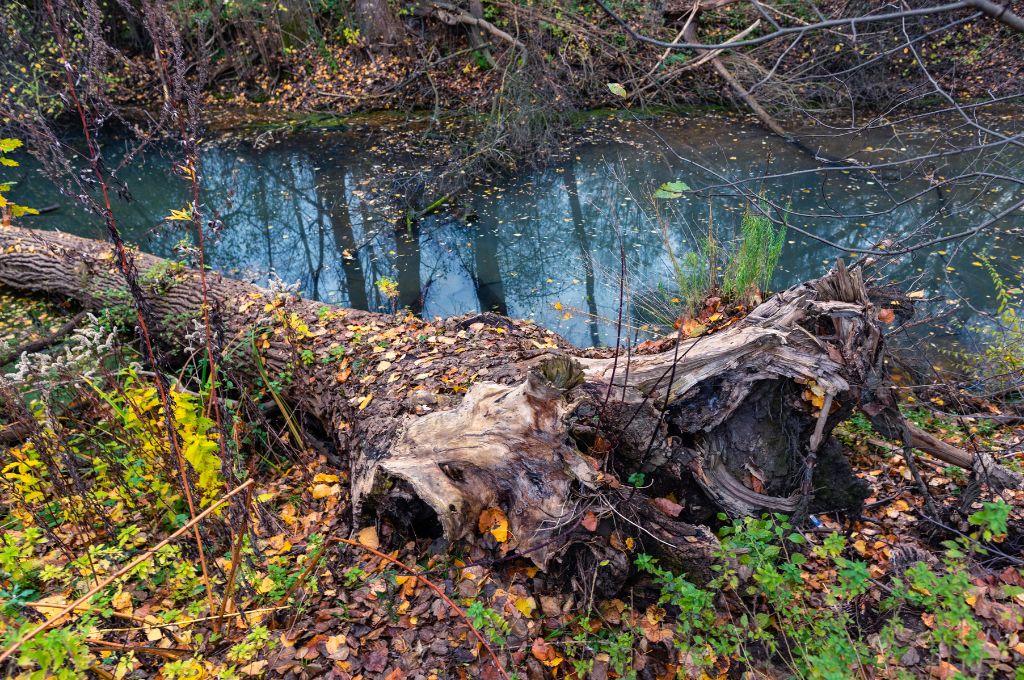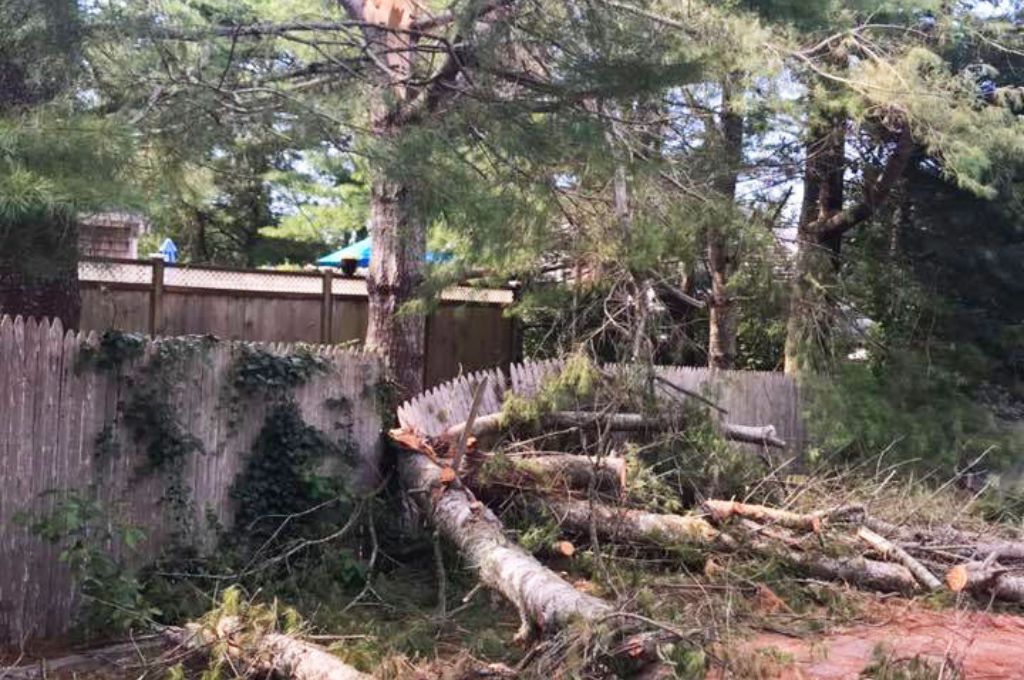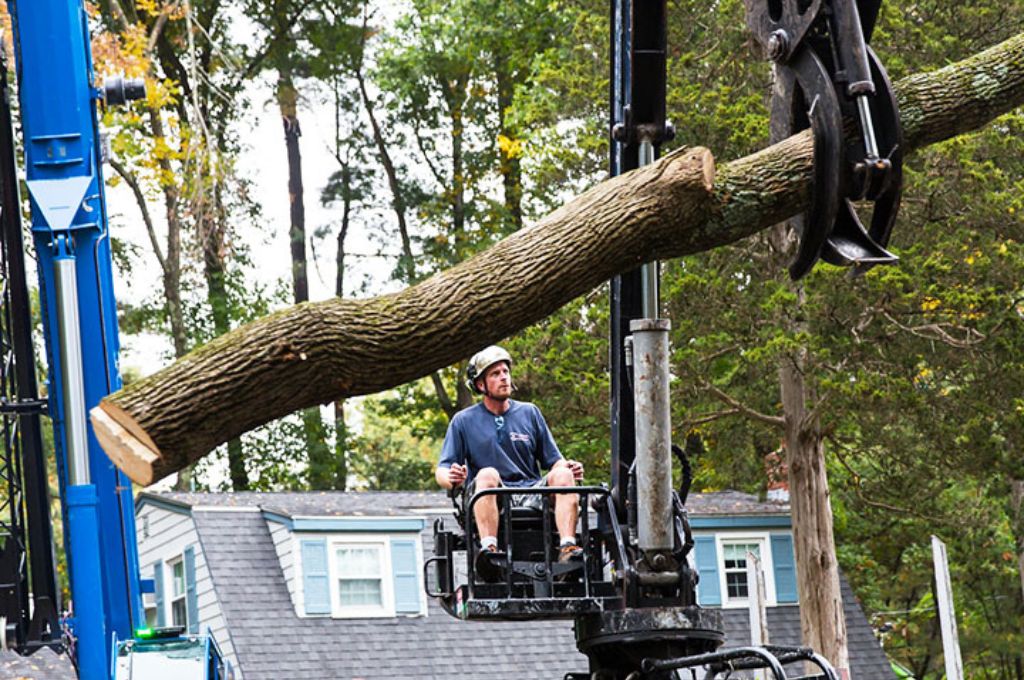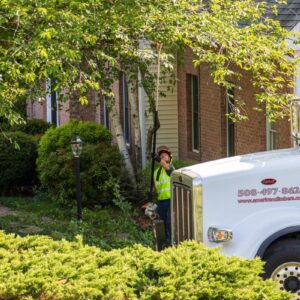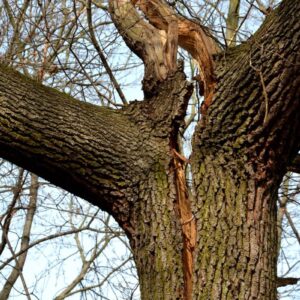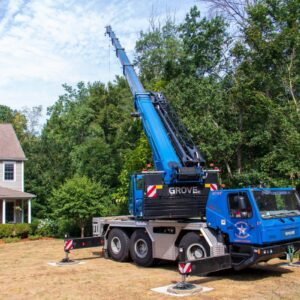Heavy rain storms in Massachusetts can cause numerous issues for homeowners and their yards, including unstable ground due to saturated soil. The risks are heightened in early spring during the region’s mud season when saturated ground can cause trees to uproot and cause structural damage.
Proper drainage can protect your home and family from falling trees by preventing the ground from becoming overly saturated. Structurally sound soil decreases the risks of uprooting and damage from trees.
Key Takeaways
- Saturated ground and soil are more likely to occur during the muddy season when melting snow and rain mix to over-hydrate the soil.
- Trees in saturated soil are prone to uprooting, as their roots can’t anchor the trees into the ground.
- Some trees may need removal when in saturated soil, but a tree care professional may be able to save a tree through staking or other methods.
- Improving your yard’s drainage can prevent saturated soil.
Saturated Ground and the Risks it Presents
Soil naturally has voids and spaces where it can take in additional water. Under normal circumstances, soil has no issue absorbing the water and recreating the voids.
Saturated soil occurs when no more void spaces exist for the water to fill. With nowhere to go, the water collects on top of the soil. The saturated ground cannot hold together as well as unsaturated soil, leading to a muddy and pliable mixture.
Causes of Saturated Soil in Massachusetts
Saturated soil can occur from several elements, some controllable and others out of our control. Some of these reasons include:
- Storms: Heavy rainfall or continuous rain can cause soil saturation, as the ground does not have time to process the excess water it’s facing.
- Melting Snow: During the early spring mud season in Massachusetts, we often see plenty of water on the ground; melting snow and spring rains mix to create excess water. This can cause saturated water even when the rains are mild.
- Flooding: Flood waters can reach your yard and bring in too much water for the ground to absorb.
- Poor Drainage: Proper drainage helps you avoid over-saturation during heavy rains. Yard and soil makeup not equipped to drain water can lead to saturated ground.
Saturated Soil and Its Effect on Trees
As you might expect, saturated soil can harm the trees in your yard. Trees need the proper amount of hydration to survive, and too much water will cause problems for them in the short and long term.
WARNING: Always use caution around trees in saturated soil. Even without external elements like wind, these trees may be unstable and prone to falling. Call a tree care specialist to examine your yard and trees for potential hazards.
Symptoms of Trees in Saturated Soil
There are several signs you may be dealing with a tree in saturated soil. Some common things to watch out for include:
- Standing water on the ground
- Leaf yellowing
- Leaf drop
- Smaller leaves
- Watersprouts
- Dieback of canopy portions
- Exposed roots
- Soil heaving
Are trees in saturated soil more prone to uprooting?
Yes, trees in saturated soil have a higher chance of uprooting and causing damage than trees in normally saturated soil. The roots will be unable to keep the tree in place as the soil is too muddy and unstable. With nothing to tether the tree to the ground, it may topple over.
Most trees grow their roots in the top two feet of soil, which means that the soil saturation does not have to penetrate deeply for a tree to become unstable.
The winds of a typical storm can increase the risk of a tree uprooting. However, even without any wind, you may find a tree uprooting and falling into a house when the weather is relatively calm due to water-saturated soil.
Long-term Issues Facing Trees in Saturated Soil
Aside from the danger of a tree falling over, there are health risks to a tree remaining in saturated soil. The tree won’t be able to get enough oxygen from the soil (yes, trees need oxygen!) and may die without proper precautions.
Trees may also be more susceptible to diseases and pests, as they cannot fight against external threats as effectively while dealing with extensive flooding.
Root decay is common with trees in saturated soil, leading to death and an increased risk of uprooting even when conditions are calm.
Preventing Saturated Soil in Your Yard
Prevention is often much more effective than curing a problem after it has arisen.
Mud season is an unfortunate reality in our region, but you can take preventative steps to mitigate the risk your trees face when the snow melts and the rains begin to pour. Completing these steps may be the difference between saving a tree and having an expert remove it after a storm.
First, you should attempt to improve the drainage in your yard. You can add soil to the yard to assist with drainage, especially if you add a top layer with loam or compost. Mixing this into the existing soil should improve drainage and increase void spaces for water to escape.
Regrading your yard will also allow water to drain and help you avoid water pooling in one location. Keep in mind that this option will require time and a yard big enough to support the process.
French drains may assist with improving the drainage in your soil. Install a French drain underground and allow it to move excess water out of your yard to avoid oversaturation. This can be a time-consuming project, so consider it if you have consistently oversaturated soil.
Smaller trees are more susceptible to uprooting from saturated soil than larger ones, as smaller trees don’t have as robust or deep a root system to stay upright. Consider staking if you have newly planted or smaller trees in your yard.
Staking a tree involves tethering it to stakes to help support it. Not every tree needs staking, and you should speak with a tree care professional to discuss whether the process is right for your trees and landscape.
Testing Soil Drainage in Your Yard
If you want to get an idea of the drainage capacity of your soil, there is a test you can try. Dig a hole that is one foot deep and wide. Fill it with water and record how long it takes to drain. If it takes longer than one to three inches per hour to drain, you may need better drainage in your yard.
When to Have a Tree Removed
Most property owners are not equipped to determine whether a tree must be removed when in saturated soil. Call a tree care specialist to assess the situation if you notice your tree looking unhealthy or your soil looking soggy.
Our team at American Climbers can determine whether you need to remove the tree or if there is something we can do to save it. Our team has the tools to handle any removal job, such as our tree removal crane, to prevent the risk of the tree falling or causing damage.
We also offer 24-hour emergency tree service if a storm causes uprooting and you need immediate assistance removing a downed tree.
When Saturated Soil Causes a Tree to Fall, the Team at American Climbers Can Help
Soil with poor drainage isn’t just a hazard to your plants in the mud season; it can also be a risk to your home and family. Trees in saturated soil can uproot even without strong winds, so you must be proactive to avoid accidents or further damage.
Our team at American Climbers is ready to use our skills and technology to assist you with whatever tree removal needs you might have. Call us at 508-497-8628 or request an estimate today to learn more about our services and how we can help.
Blog Topics
Recent Posts
What's Happening? Stay Informed!
Stay on top of local events, pest and disease updates, tree and landscape tips, and more. Delivered straight to your inbox each month.



